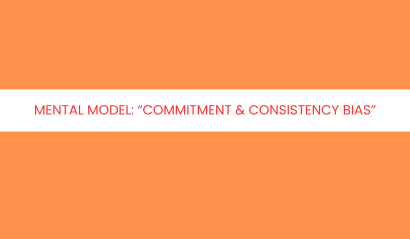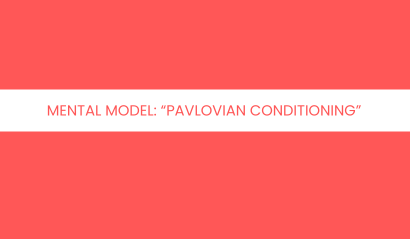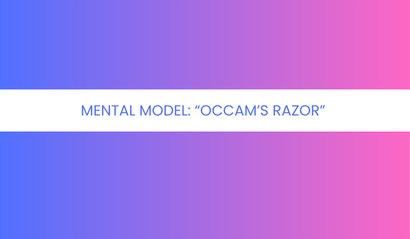Mental Model: Liking
The way we perceive and interact with people is often influenced by subconscious biases, and one of the most powerful among them is the Liking. This psychological principle suggests that we are more likely to agree with, trust, and be influenced by people we like, often without objectively evaluating their arguments or intentions.
While liking someone is natural, it can lead to irrational decision-making, blind trust, and even manipulation if we are not careful. In this blog post, we will explore the origins of the Liking Mental Model, how it manifests in everyday life, real-world examples, and strategies to prevent it from leading us astray.
Origin of the Liking Mental Model
The concept of the Liking Mental Model is deeply rooted in social psychology. One of the most influential discussions of this principle comes from Dr. Robert Cialdini’s book “Influence: The Psychology of Persuasion”, published in 1984. Cialdini identified liking as one of the six universal principles of persuasion, alongside reciprocity, commitment and consistency, social proof, authority, and scarcity.
Cialdini’s research highlighted how people are more inclined to comply with requests made by those they find likable. This preference operates through multiple psychological triggers such as physical attractiveness, familiarity, similarity, and association.
Evolutionarily, our ancestors relied on social bonds for survival. Trusting and favoring those who seemed friendly and similar increased cooperation and protection within tribes. While this instinct served an important purpose in ancient times, in today’s complex world, it can lead to unintended biases and poor decision-making.
Understanding the Liking Mental Model
The Liking Mental Model operates based on a few key principles:
1. Physical Attractiveness
Studies have consistently shown that attractive people are perceived as more competent, intelligent, and trustworthy, even when there is no correlation between their appearance and actual ability. This phenomenon, known as the halo effect, makes us more likely to believe or follow good-looking individuals.
2. Similarity
We tend to like people who share similarities with us, whether in terms of background, interests, opinions, or even mannerisms. This preference makes us more receptive to their suggestions and opinions, regardless of their merit.
3. Compliments and Flattery
People naturally enjoy receiving compliments, and even when we suspect flattery to be insincere, it still influences our perceptions. This makes us more likely to favor those who give us positive reinforcement.
4. Familiarity (Mere Exposure Effect)
We tend to develop a preference for things and people we are repeatedly exposed to. This principle, known as the mere exposure effect, explains why we trust familiar brands, public figures, or acquaintances more than unknown alternatives.
5. Association
Our feelings towards one entity can transfer to another through association. For example, celebrities endorsing a product can make us unconsciously link the product with the positive traits of the celebrity, even though their personal experience with the product is often questionable.
Real-World Examples of the Liking Mental Model
1. Marketing and Advertising
Brands heavily exploit the liking bias by using attractive celebrities, relatable influencers, and familiar slogans to create positive associations with their products. People often buy products endorsed by their favorite actors or influencers without evaluating their actual quality.
2. Sales and Negotiation
Salespeople are trained to build rapport with customers by mirroring their speech, finding common interests, and using positive reinforcement. The more likable they appear, the higher the chances that customers will make a purchase—even if the product isn’t the best option available.
3. Hiring and Promotions
Managers often unconsciously favor candidates they like over those who may be more qualified. If a candidate shares a similar background, interests, or personality with the hiring manager, they may have an unfair advantage over equally or better-qualified candidates.
4. Politics and Public Influence
Politicians leverage the liking principle by presenting themselves as relatable, friendly, and charismatic. They use personal stories, humor, and flattery to gain public trust, often leading people to vote based on personal preference rather than policy alignment.
5. Friendship and Personal Relationships
We often take advice from friends and family simply because we like them, not necessarily because they are experts in a given subject. This can lead to biased decision-making, such as choosing a financial plan based on a friend’s recommendation rather than expert advice.
How to Avoid Falling for the Liking Bias
Being aware of the Liking Mental Model is the first step in overcoming its influence. Here are some practical strategies to counteract its effects:
1. Separate Likability from Competence
Before agreeing with someone or making a decision based on their suggestion, pause and ask yourself: Am I influenced by their expertise, or do I simply like them? Evaluating the merit of the information separately from the messenger can help prevent biased decisions.
2. Analyze the Argument, Not the Person
Instead of focusing on who is presenting the information, critically assess the argument’s logic and evidence. A charismatic speaker can still present flawed reasoning, and an unlikable person may offer valuable insights.
3. Fact-Check Recommendations
Whether it’s a product review, a job referral, or financial advice, always verify recommendations independently. Look for objective reviews, expert opinions, and multiple perspectives before making a decision.
4. Recognize Flattery and Rapport-Building Techniques
Be cautious when someone excessively flatters you or tries to establish too many similarities too quickly. While rapport is important, over-reliance on it can be a sign of persuasion tactics rather than genuine connection.
5. Be Wary of Emotional Influence
If you feel an unusually strong emotional connection to a salesperson, politician, or influencer, take a step back and analyze whether your emotions are clouding your judgment. Emotional appeal is a common tool for persuasion, and recognizing it can help maintain objectivity.
6. Seek Diverse Opinions
When making important decisions, actively seek opinions from people with different perspectives. This can help counteract the bias that results from listening only to those we like or agree with.
7. Practice Self-Awareness
Regularly reflect on your decision-making patterns. If you notice that you frequently favor certain people’s opinions regardless of their expertise, make a conscious effort to evaluate arguments more objectively.
Conclusion
The Liking Mental Model is a powerful force that shapes our decisions, often without us realizing it. While it is natural to trust and be influenced by people we like, it is essential to distinguish between likability and actual merit. By being aware of this bias, questioning our instincts, and using objective criteria for decision-making, we can make more rational choices in our personal and professional lives.
Understanding and overcoming the Liking Mental Model doesn’t mean we should stop liking people—it simply means we should not let our emotions dictate important decisions. The key is to balance our natural preferences with critical thinking, ensuring that our choices are based on reason rather than personal bias.







